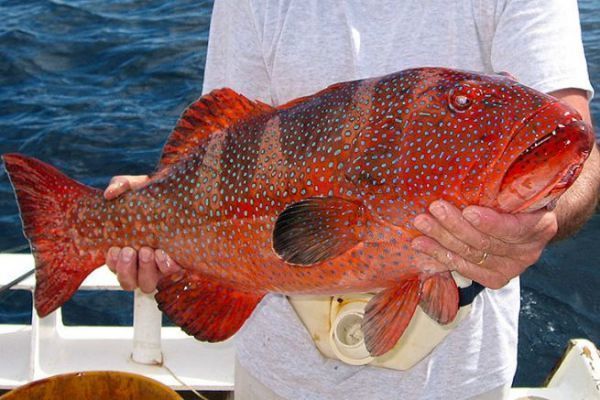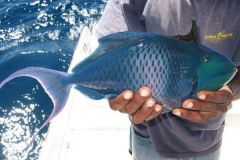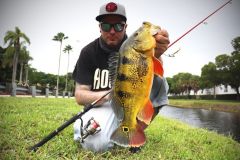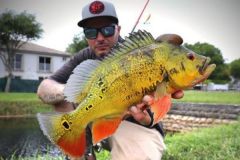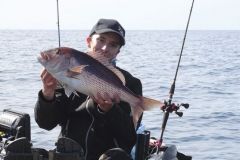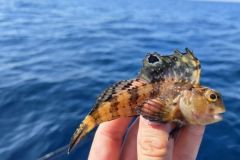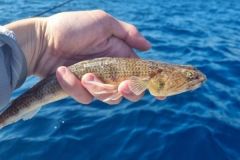Scientific name
Plectropomus pessuliferus (Fowler, 1904)
Morphology of wandering grouper
This grouper has an elongated, massive body. Its head has large lips and a prominent lower jaw. Its color is brown to reddish-orange. The upper back is marked by 3 or 4 broad stripes that slightly darken the reddish coat. The whole body is punctuated by numerous bright blue spots with dark borders.
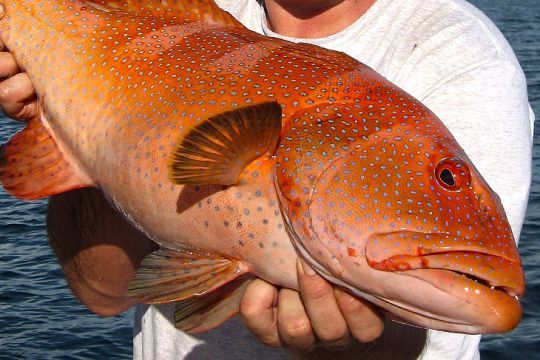
The dorsal fin contains 7 to 8 spines and 10 to 12 soft rays, while the anal fin has 3 spines and 8 soft rays. The caudal fin is almost straight-cut, with slight ringing at the tip and a fine electric-blue border.
Fishing spots
This grouper is found in the Indian Ocean from Madagascar to the Red Sea, and as far south as the Pacific Ocean, in central position in warm waters from northern Australia to Japan. These fish live in coral reefs, shallow lagoons and offshore reefs, at depths of 25 to 150 meters.
Coral trout fishing techniques
Longline fishing and waddling with wobbling spoons, jigs and slow-jigs are the best ways to target this grouper. He'll bite on fatty pieces of fish cut into 5 cm cubes, although larger pieces don't scare this big-mouthed hunter.
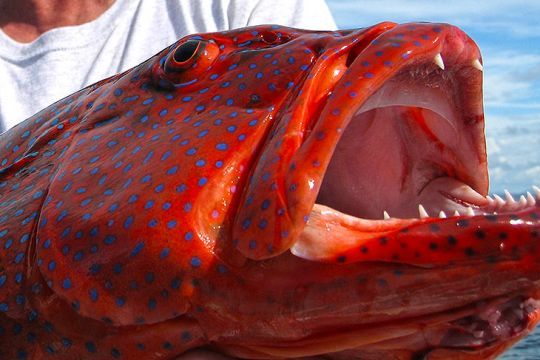
Use a 4 or 5-metre-long fluorocarbon leader to avoid breaking on contact, as this bottom-dwelling fish systematically seeks out corals and other bottom refuges.
Reproduction
The female becomes male as she ages (protogynous hermaphrodite). Fertilization is external, and eggs and larvae are planktonic.
Size and weight
- Legal minimum catch size: none
- Size at sexual maturity: at least 63 cm (lack of scientific data)
- Average height: 60 cm
- Maximum height/weight: 1.20 m
- World record: 21.50 kg (Zanzibar Strait, Tanzania, 13/01/2023)
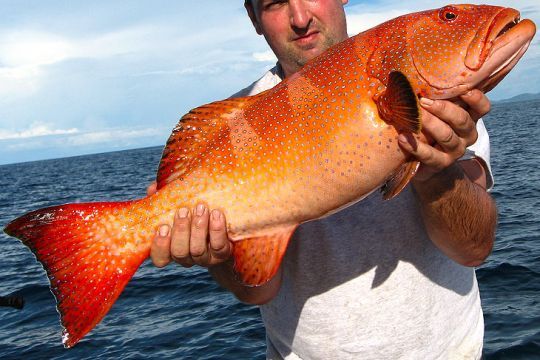
Good to know
Carnivorous, this grouper feeds mainly on fish and crustaceans. It sometimes hunts in tandem with other species such as the giant moray ( Gymnothorax javanicus ), the napoleon ( Cheilinus undulatus ) or the reef octopus ( Octopus cyanea ).

 /
/ 